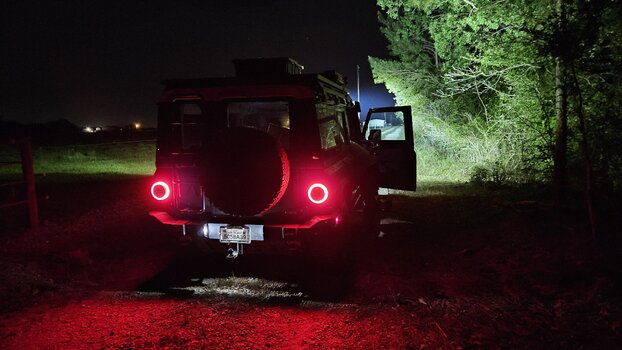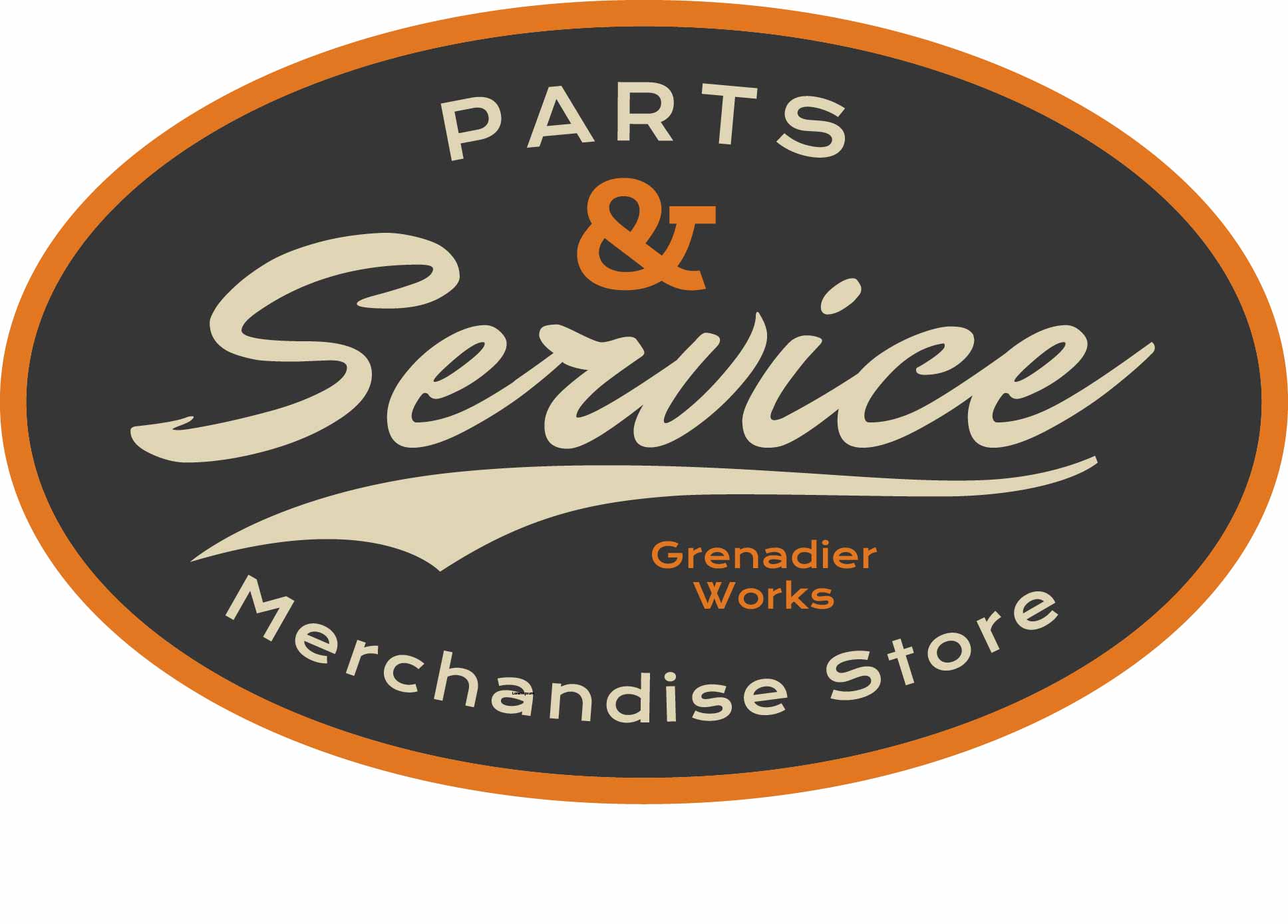The Grenadier Forum
You are using an out of date browser. It may not display this or other websites correctly.
You should upgrade or use an alternative browser.
You should upgrade or use an alternative browser.
Airing down Steelies and stock tires? Suggested ranges?
This depends on your terrain and weight loading of the vehicle; 20psi is generally very safe. Unless the wheel/tire is designed for it, usually the wheel diameter is a safe number. Of course, anything high speed or with high lateral tire loads should have a higher pressure, and at anything below street pressure there is always the risk of de-beading
- Local time
- 5:29 PM
- Joined
- Sep 30, 2021
- Messages
- 384
- Reaction score
- 705
I went down to 18 and ran around some desert roads the other day. Felt good but did't hit anything real big or real fast. The washboard at 30-40mph felt much better.
- Local time
- 7:29 AM
- Joined
- May 15, 2022
- Messages
- 1,393
- Reaction score
- 3,422
- Location
- Sydney NSW, Australia
17” rims, 15 psi front / 18 psi rear in low range in super soft desert sand & high ambient temps (45C+), I can’t imagine needing any less.
Soft coastal dune sand in milder temps (35C) was no problem at road pressures however so might not have needed to go as low as we did in the desert. Really didn’t want to be doing a recovery in those temps though.
Otherwise the minimum psi = rim diameter is a good rule of thumb as mentioned above.
For you cold climate folks, what pressures do you run in snow conditions?
Soft coastal dune sand in milder temps (35C) was no problem at road pressures however so might not have needed to go as low as we did in the desert. Really didn’t want to be doing a recovery in those temps though.
Otherwise the minimum psi = rim diameter is a good rule of thumb as mentioned above.
For you cold climate folks, what pressures do you run in snow conditions?
Thank you for posting this as I was wondering the same thing. I aired down over the weekend to attempt to get out of some super sticky clay and I took the tires down to 26ish. Didn't help. Clay defeated tires and recovery boards - filled every crevasse until it was a clay tire on a clay charcuterie board. Winch for the win. I did get a good shot of airing back up to the 49/43 psi once we got free. Note my DeWalt inflator by the passenger front tire.
Attachments
Can only speak from experience with this, as all tires and vehicles are different, but so far I've done low 20s for rougher unimproved roads and rocks. In the past and in other vehicles I've done high teens for stuff like beaches (sand).
Much of this is tire sidewall dependent, but in a similar weight vehicle (lc100 with offroad armor and gear), 33"/16" combo got dicey and Ive pinch flatted below 18, so with 17's and 33's I'd stick to 20 and up on rocks. 15 on sand. Stupid driving and acts of angry trail gods negate all advise, naturally. Shit happens.
- Local time
- 10:29 PM
- Joined
- Oct 20, 2023
- Messages
- 157
- Reaction score
- 248
- Location
- San Juan de la Rambla, España
In southern Finland snow is usually not so deep, max. 30-60 cm depending on winter. As I alredy mentioned earlier snow is not constant, properties vary on temperature, water content, freezed layers and also way the snow has accumulated.
Here 30-35 cm of new snow (possibly less on the steep part) and road pressures with chains:

- With chains I usually drive with road pressures. At least if need is just for short time. Can make still good progress.
- Without chains 1,2 - 1,4 bar (17-20 psi) is typical. Very seldom de-beading as snow fills terrain gaps and reduces friction. Could perhaps go down to 1,0 bar but very little extra gain expected.
Here 30-35 cm of new snow (possibly less on the steep part) and road pressures with chains:
So obviously you need to air up, so some kind of compressor is needed. If you do end up having an issue due to too lower pressure and the tire de-beads (is that the term?), what is your path forward there? Throw the spare on? How hard is it re-mount the tire in the field?
The hardest part I think is cleaning the bead area. The cleaner the better.So obviously you need to air up, so some kind of compressor is needed. If you do end up having an issue due to too lower pressure and the tire de-beads (is that the term?), what is your path forward there? Throw the spare on? How hard is it re-mount the tire in the field?
You can look up using starter fluid on the internet. It's fast. I've never done that. It always seemed like a good way to lose an eye.
High volume is best, as once you get a seal, even a week one, the pressure will build and pop it on. Assuming one side is on the rim, I've always put he tire on a couple rocks (not the rim) and stood in the rim forcing tire bead against the rim, poured some water on it to assist with the seal, and ran the pump till it popped. If you're "adventure travailing" and its a muddy situation, toss on the spare until you can get settled and can take the time to clean it up, get the mud out etc. and rotate that tire to the spare, as there's a good chance its out of balance if it spun a bit, etc.
I carry spoons if it pops off outside. Sometimes you can get it 90% and its a bear, if so you can use a car jack and your trucks weight as leverage to push it the rest of the way.
- Local time
- 10:29 PM
- Joined
- Oct 20, 2023
- Messages
- 157
- Reaction score
- 248
- Location
- San Juan de la Rambla, España
I use a portable 12V compressor because I can put it into the car I use.
If a tyre is de-beaded it is a 10 min job to put back.
Seel wheels are more reliable off-road. The bead can be straightened with two hammers if it is bent.
If a tyre is de-beaded it is a 10 min job to put back.
- Jack up the corner (usually with Hi-Lift in the woods).
- Clean the bead surface or surfaces if both sides are off. There may be sand, mud, clay, wood pieces, etc. Water or dirt inside tyre is practically impossible to remove but just leave it.
- Connect the compressor to tyre valve.
- If only one side has de-beaded push tyre against it and start compressor. After a while air pressure will pop tyre over the hump.
- If both sides are off it is a little bit tricker, the tyre needs to be centered well so that both sides are quite tight. If it is too diffucult under car you can remove the wheel and do it on ground. I have couple of times used a cargo strap on the tread to push sides wider.
- Fill to required pressure. Check for leaks. Remove compressor.
Seel wheels are more reliable off-road. The bead can be straightened with two hammers if it is bent.
- Local time
- 10:29 PM
- Joined
- Oct 20, 2023
- Messages
- 157
- Reaction score
- 248
- Location
- San Juan de la Rambla, España
I have used starter fluid in the workshop but very seldom off-road. The videos usually don't show what happens after the flame: The gas inside tyre cools rapidly and will de-bead the tyre if air is not quickly added.
Similar threads
- Replies
- 2
- Views
- 187
- Replies
- 16
- Views
- 623
- Replies
- 14
- Views
- 1K
- Replies
- 40
- Views
- 2K




